In terms of the operation of a modern household appliance, an ignorant user can be confused, because it is difficult to immediately understand what kind of miracle it is - Low Frost in the refrigerator and how this defrosting technology differs from the classic FrostFree (Frost) or so widely advertised No frost (Without hoarfrost).
Many potential buyers do not understand why the old, reliable, proven over the years refrigerator, which must be defrosted almost every month, is worse modern units with various additional features. All these latest defrosting systems have exceptional advantages, but also some disadvantages. To understand this, we recommend that you read this article.
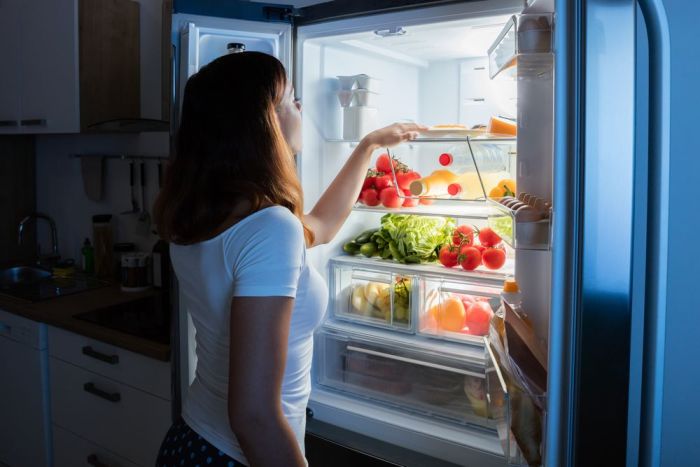
Content
What it is
The name of the technology Low Frost is translated from English as Low Frost, while the evaporator circuit is located around the entire perimeter of the freezer, but beyond the plastic wall its actions are not visible to the user. In modern household units, it is customary to fight with the formation of ice in two main ways:
- Heat is slowly removed while providing a small temperature difference between the walls of the chamber and the interior.
- Achieve smooth and simultaneous cooling of the entire useful volume of the freezer.
The first method is ineffective in practice, and the second one will be the answer to how the “Frost-free” system works in modern household refrigerators.
The technology of Frost in the refrigerator operates as follows:
- There are no tubes on the evaporator; there is a double-walled chamber in the freezer.
- The refrigerant is supplied directly into the evaporator, filling its entire volume.
- The temperature of the evaporator body decreases smoothly, and the walls of the freezer chamber are cooled evenly.
Such advantages of the system are immediately noticeable, especially to those users who immediately switched from the classic product with a tubular evaporator to the latest technology.
Features
Such actions of the Low Frost technology can be easily noticed by any consumer who previously used the unit with a classic evaporator in the form of a set of tubes enclosed in a common aluminum housing:
- There is no frost inside the chamber, because there are no zones with a sharp drop in temperature, there is no intensive formation of condensate.
- A slight temperature difference between the walls and the air inside the chamber.
- The internal volume is cooled evenly, without temperature jumps.
- The frequency of maintenance or full defrosting within 2 hours should be carried out only once a year.
Models with Low Frost can also be equipped with drip defrosting. Most often, manufacturers in the refrigerator set the same defrosting scheme, and in the freezer “Without frost”. The weeping wall was originally installed in products with slow cooling technology, and later developers began to install it in FrostFree refrigerators.
The main advantage of Low Frost technology, experts consider its low cost, minimal changes in design, as well as a very attractive final cost of refrigerators for the mass consumer. That is why household appliances using similar technology are still very popular, although it is considered already obsolete.
Advantages and disadvantages
Positive qualities of the Fishing Frost system:
- the factor of sharp drops in temperatures is completely absent, condensation does not appear, and there is no ice formation on the walls, if the “coat” periodically grows, this is a sign of poor functioning of the refrigerator, diagnostics are required;
- the entire volume inside the freezer is actively cooled, so frost appears on the products;
- the defrosting process is fast and not burdensome for the user;
- the range of models is much wider, and the cost is much lower.
There are few negative points:
- a big difference in temperature between the upper and lower shelves (5-8 degrees).
Low Frost technology is only used in freezers, and many experts call it a compromise between the drip system and Know Frost.
Which is better - Low Frost or No Frost
The purpose of the No Frost and Low Frost cooling technologies installed in most modern refrigerators is almost identical. Both types are designed to "facilitate" the life of the hostess, eliminating the need to regularly defrost refrigerators and scrape ice on the walls of the household appliance.
Refrigerators with the Low Frost system are a kind of compromise between No Frost and a conventional refrigeration system. According to this technology, a special evaporator is built into the design of the internal surface of the refrigerator, covering with its action the entire perimeter of the freezer. It is designed to control the temperature and humidity in the device. Maintaining these indicators at a stable level, the evaporator, although it can’t completely rid the refrigerator of ice formation, copes with the maximum slowdown of this process. Moreover, the resulting ice layer is quite thin and easy to clean during manual cleaning of the kitchen appliance.
The No Frost cooling system, in turn, is rightly considered perfect in matters of relieving its owner of the need for additional manual defrosting of the refrigerator. At the heart of the design, manufacturers install a special fan that evenly distributes cold air flows throughout the refrigerator compartments. Next, a built-in evaporator “acts”, depriving these vapors of a large amount of liquid. Due to the described process, evaporated moisture under the influence of low temperature turns into frost, settling on the walls of the household unit. In turn, the resulting thin layer of ice "flows" into a special tank, dissolving due to the functioning of the heating element provided for by No Frost technology. After a short time, the melted ice evaporates from the tank, thereby ensuring the complete absence of ice or snow on the walls of refrigeration or freezers.
Based on the above information, the main difference between the cooling systems under consideration for the refrigerator, with the exception of the design mechanism itself, can be considered the periodic need for self-defrosting of the chambers of the device with Low Frost, which is not required in case of using the automated process provided by No Frost technology.
In choosing the most suitable option for cooling a household appliance, it is important to take into account the main disadvantages of each of the described systems.
Possible negative aspects of using No frost include:
- high energy consumption necessary for the correct functioning of refrigeration equipment with a complex design;
- a sufficiently loud sound accompanying the operation of the cooling mechanisms, capable of causing significant discomfort to the owners, especially when using the refrigerator in a studio apartment with high audibility;
- the need for careful packaging of products during their storage in devices of this type. Due to the removal of the maximum amount of moisture from the "inside" of the refrigerator, food in an open state, located in it, can dry, wind off, deteriorate.
Disadvantages of using low frost:
- the need for periodic defrosting and cleaning the freezer from a thin layer of ice. The resulting ice can adversely affect the correct functioning of the equipment, which means that with the slightest education, the owner of the refrigerator will be required to clean it, despite the temporary possibilities or personal desire;
- the inability to use this system in the refrigerator compartment. This fact is a significant drawback, since ice in the process of using the refrigerator is actively formed not only in the “freezer”, but also in the refrigerator itself.
The best models with low frost
Bosch LOW FROST KGV39VK23R
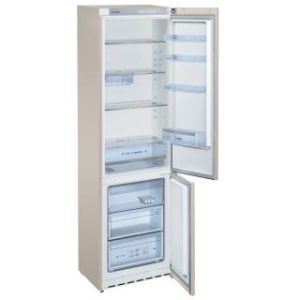
- Dimensions: 600x650x2000 mm
- Energy Efficiency Class: A + (292 kWh / year)
- Total volume: 352 L
- Fridge: 257 L
- Freezer: 95 L
- Climate class: SN, ST
- Power freezing: 8.0 kg / day
- Chamber defrosting system: refrigeration - drip system, freezing - manually
- Noise Level: 40dB
- Weight: 66 kg
- Assembly country / guarantee: Russia / 1 year
- great appearance
- impressive capacity
- build quality
- quiet work
- adapts to ambient temperature for a long time
This model is assembled at the plant in Strelna near St. Petersburg, the German concern Bosch only supplies components, and its representatives check the technical condition of the products at the exit from the conveyor.
SHARP SJ-B132ZR-WH
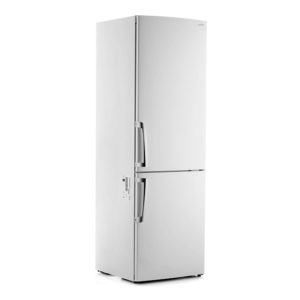
- Dimensions: 600x650x1850 mm
- Energy Efficiency Class: A + (279 kWh / year)
- Total volume: 317 L
- Fridge: 223 L
- Freezer: 94 L
- Climatic class: SN, T (+ 10— + 43 ° С)
- Power freezing: 4.5 kg / day
- Chamber defrosting system: refrigeration - drip system, freezing - manually
- Noise level: up to 40 dB
- Weight: 75 kg
- Manufacturer / Warranty: Thailand / 12 months
- high quality materials
- excellent equipment
- quite quiet
- nothing more inside, everything is in place
- not identified
SIEMENS KI 87SAF30 R

- Dimensions: 556x545x1772 mm
- Energy Efficiency Class: A ++ (205 kWh / year)
- Total volume: 272 L
- Fridge: 211 L
- Freezer: 61 L
- Climate class: SN, T
- Power freezing: 7.0 kg / day
- Chamber defrosting system: refrigerating - No Frost, freezing - manually
- Noise level: no more than 35 dB
- Weight: 67 kg
- Power storage during power outages: up to 26 hours
- Country of manufacture / warranty: Germany / 1 year
- stainless steel case
- high quality of all materials
- the ability to integrate into the kitchen
- fruit box with setting mode
- small volumes, not for a large family.
AEG SCS61800FF
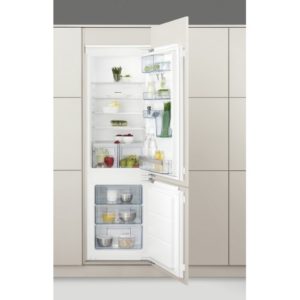
- Dimensions: 556x549x1769 mm
- Energy Efficiency Class: A ++ (230 kWh / year)
- Total volume: 267 L
- Fridge: 192 L
- Freezer: 75 L
- Climate class: N, SN, ST, T
- Power freezing: 4.0 kg / day
- Storage of products during a power outage: during the day
- Chamber defrosting system: freezing - manually, refrigerating - drip system
- Noise Level: Up to 36 dB
- Weight: 59 kg
- Assembly country / guarantee: Hungary / 12 months
- electronic control with display
- quality of materials
- gourmet freshness area
- super freezing
- large department for vegetables (watermelon included)
- a little noise, but not critical.
Today, built-in appliances of the well-known brand AEG are manufactured by the Swedish concern Electrolux Group, and two-chamber refrigerators for sale on the domestic market of Russia are assembled only at production facilities in Italy and Hungary.
findings
Today it is quite difficult to buy an excellent model of a two-chamber refrigerator from a real company: AEG is going to Hungary or Italy, Bosch to Russia, and Sharp has set up his factories in Thailand, where there are cheap workers. But the quality of many models does not suffer much from this, the main thing is not to buy any model of an unknown brand assembled in China, because famous brands trust the assembly of the PRC only to small household appliances.
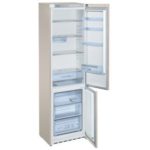 | 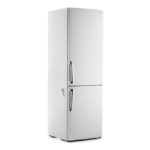 | 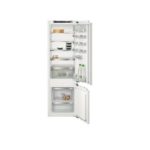 |  |
|
| Title | Bosch LOW FROST KGV39VK23R | SHARP SJ-B132ZR-WH | SIEMENS KI 87SAF30 R | AEG SCS61800FF |
| Color / Coating Material | beige / plastic / metal | white / plastic / metal | white / metal | white / metal |
| Control | electronic | electronic | electronic | electronic |
| Energy consumption | class A + | class A + | class A ++ | class A ++ |
| Dimensions (WxDxH) | 60x65x200 cm | 60x65x185 cm | 55.6x54.5x177.2 cm | 55.6x54.9x176.9 cm |
| Overall volume | 352 l | 317 l | 272 l | 267 l |
| Noise level | up to 40 dB | up to 42 dB | up to 35 dB | up to 36 dB |
| Price | from 24 900 rub. | from 20650 rub. | from 71000 rub. | from 63350 rub. |
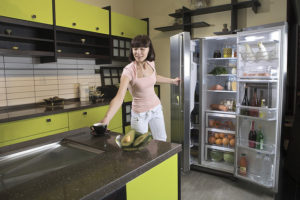
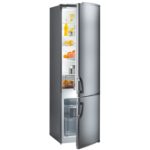
I’m hands and feet for no frost, there are no problems with the new hotpoint chill, wiped with a cloth and that's it
Vika, and what is your model? I heard a lot of good things about Hotpoint, but I don’t know much about them ..
Why is low frost already, when there is a noufrost, I don’t understand. And even more so, this is not such an expensive technology already, somewhere around 20k we took our frost with know-how, and everything is fine
and I don’t understand much. I do not complain a bit about the noufrost system in indesit, very pleased. no defrosts once a month.
no frost can be bought if you do not care about your health, and family members.
Already a meter away from such a refrigerator, the magnetic field greatly exceeds all permissible norms.
I don’t know if there is any sense in low frost. when I changed the old hotpoint to a new one with know-how frost, I noticed the difference, yes. and here I’m not sure if it’s worth it at all.